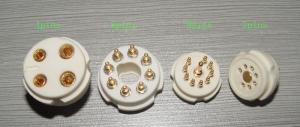-
Posts
13,713 -
Joined
-
Last visited
-
Days Won
39
Content Type
Profiles
Forums
Events
Everything posted by luvdunhill
-
what does C1 exactly do? It's 1nF across the plates of the input stage tubes. Looks like some sort of filter or compensation? Can the working voltage be considerable lower, say 100v?
-

The DIY and audio equipment rut...... where to now?
luvdunhill replied to Beefy's topic in Do It Yourself
a few ideas: Build a jig to test and measure your past projects Find an underdocumented project without boards and learn a PCB CAD program and make a set of boards for said project Modify something Get into speakers (build speakers, power amp, etc.) Identify more large scale design decisions that you don't have experience with and build something alon those lines, say a BJT output amp, or a parafeed amp, or solid state transformer coupled amp, etc. Find a project that gets you involved in another website, say diyaudio.com. ... Just a few ideas, once you narrow it down a bit, i'm sure there will be lots of help choosing something.. -
I haven't found any non-Mac memory with the same specs as the stock memory. Specifically ECC non buffered with the same timing and latency. edit: that and there are very few 8 GB (2x4GB) choices at Newegg. I think I'll just buy something there.
-
ok, back to looking for a 8GB upgrade kit for my Mac mini. First option is a kit from OWC. The strange thing, is they seem to have rebranded another manufacturer? Here's a link: 8.0GB (4.0GB + 4.0GB Kit) PC-8500 DDR3... (OWC8566DDR3S8GP) at OWC other option is Mushkin from Newegg: Newegg.com - Mushkin Enhanced 8GB (2 x 4GB) DDR3 1066 (PC3 8500) Dual Channel Kit Memory for Apple Model 976644A Any opinions?
-

The Ultimate DIY Part 2 ? The KGITSOJC
luvdunhill replied to kevin gilmore's topic in Do It Yourself
Both the PSP and iPhone screens are cheap and easy to get ahold of... -
thinking out loud... the thermal resistance goes down of the heat sink itself as it heats up, but as that happens the junction temperature of the devices rise, which in this case are positive temperature coefficient devices (BJTs). The issue is that since the devices are paralleled, one device will hog the current as this happens. I wonder if you could add some sort of thermal feedback resistor/transistor/thermistor to the heat sink to help mitigate this effect to some extent. This feedback device would turn on at a low voltage and effectively regulate the bias voltage (i.e. in this case the CCS current) allowing it to slowly come up to spec.
-

The Ultimate DIY Part 2 ? The KGITSOJC
luvdunhill replied to kevin gilmore's topic in Do It Yourself
ok, I'm assuming that's diagonal. Lots of options in that range. -
yeah, that's partly what I'm referring to. I'm wondering if the thermal junctions present in a normal case don't actually help lower junction temperature though. For example, in this design, the air around the fins provides a much higher thermal impedance than say the bottom of the case. But since it's all one large block of aluminum, it seems that natural convection to air would be sort of a "last resort". Also, if you've ever heated up a block of aluminum, you know it takes forever to cool down via natural convection. I'm wondering if the internal temperature will rise dramatically as well, despite any attempts to add holes for natural heat convection.
-

The Ultimate DIY Part 2 ? The KGITSOJC
luvdunhill replied to kevin gilmore's topic in Do It Yourself
what's the maximum size screen that would make sense here? -
-
Do you have any way of doing some sort of thermal imaging on the thing while it is running? I'd like to place the contrary bet that you'll end up with a higher junction temperature when it's all said and done.
-
That's why you by a second F1J when the time comes, obviously
-

Couple questions for first speaker build
luvdunhill replied to mugdecoffee's topic in Do It Yourself
the idea would be that you could account for the box losses (via gaps at the seams, or not using the exact same wall covering / port geometry / crossover volume as the original design) by tuning the port. also, it's possible to track down box resonances using the same method. -

The Ultimate DIY Part 2 ? The KGITSOJC
luvdunhill replied to kevin gilmore's topic in Do It Yourself
What if the remote controlled a servo that that rotated the pot? -
I've personally heard the Exemplar's being embarrassed by some rather modest DIY horn projects
-

Couple questions for first speaker build
luvdunhill replied to mugdecoffee's topic in Do It Yourself
Do you have the ability to measure the impedance to tune the port? -
if you find it and don't like it, I'll take it and cover the expense.
-
I like the Ashton tobacco as well. Did you ever try Dunhill Royal Yacht? I'm not sure if you can still get it, but you might like it.
-
yeah, the Rogue / BAT remotes are single piece with a removable back I believe
-
yes! can't wait to chop off that piece of shit viablue connector no communication what so ever from Null Audio, both about a custom length (pre-sale) and complaining that it didn't have the connector I specifically ordered (post-sale)...
-
-

The Ultimate DIY Part 2 ? The KGITSOJC
luvdunhill replied to kevin gilmore's topic in Do It Yourself
so, assuming such a touch panel showed up... would the designer be able to commission an "at-material-cost" billet titanium remote? heh


